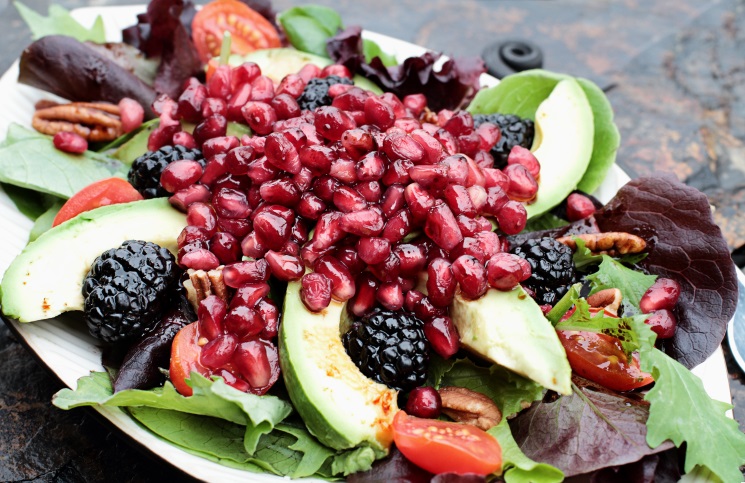Many types of tea have long been known to provide healing and wellness benefits to people. Several of the teas listed on this page have been studied in detail, and had their unique health benefits proven beyond a shadow of a doubt. Others listed have benefits that are still shrouded in mystery. They heal, prevent disease, and make us feel good, but little is known about their mechanism of action.
1. White Tea
White tea is bar-none the healthiest tea you can consume. This tea is low in caffeine, at just 30mg per cup and has the highest cancer-fighting polyphenol and catechin content of all teas (source). Catechins are one of natures most potent antioxidants and aside from their cancer-fighting benefits, the catechins in white tea have proved to significantly reduce cholesterol levels in human beings, specifically by boosting our good cholesterol and reducing the bad.
2. Black Tea
Black tea has more of the popular stimulant, caffeine than any other caffeine-containing tea. Numbers range from 47mg per 8oz cup for a regular black tea blend, to upwards of 100mg per 8oz cup for those with “breakfast blend” on the label. Black tea and the fermentation process used to cure the leaves increases the polyphenol content, making this tea particularly good at inhibiting the free-radical damage which causes lung damage due to cigarettes and other environmental chemicals.
3. Green Tea
Green tea has more of the catechin “Epigallocatechin Gallate” (ECGC) than all teas, except for white. ECGC is renowned for its antioxidant effects in the body and has been shown to reduce and even halt the effects of certain cancers: bladder, breast, lung, stomach, pancreas, and colorectal cancers. High levels of ECGC is also very effective at reducing oxidation in the brain, curbing the inflammation that can lead to neurological disorders such as Alzheimers and dementia.
4. Chamomile Tea
Chamomile is made from dried, ground chamomile flowers and is 100% caffeine-free. It’s mainly known for its mild sedative effect that comes from both consuming the liquid and inhaling its aroma. While it’s high in antioxidants like other teas, most of the positive effects that chamomile provides are a mystery to science. This tea helps to relieve anxiety, treat stomach and mouth ulcers, colic, diarrhea, and fever. Chamomile is also a great natural hair lightener when steeped and applied topically, and is often used as a home remedy for psoriasis and eczema.
5. Red Raspberry Leaf Tea
Raspberry leaf tea also comes chocked full of antioxidant properties, like the other teas discussed on this page, but this unique healthy tea has another benefit that others do not. Anthocyanins are a group of flavonoid phytochemicals found in colored fruits and vegetables. They’re natures most potent non-narcotic anti-inflammatory, and consumption of a few cups of raspberry leaf tea every day can all but eliminate the need for prescription and OTC anti-inflammatory medications. Like so many other positive effects gleaned from consuming tea, the reason why raspberry tea is so powerful is still a mystery to science (source).
6. Pu’erh Tea
Pu’erh (pronounced “pwear”) tea is the pride of China, having been consumed there for at least the last 2,000 years. It’s a black tea that’s fermented and cured using a special process that takes over a month from start to finish in order to complete. Pu’erh contains a moderate amount of caffeine at around 37mg, providing a nice pick-me-up in the morning. Pu’erh hasn’t yet been studied to the extent of other popular teas, but its benefits include the lowering of fasting blood sugar, cholesterol, and lipid levels. A few smaller studies indicate that pu’erh may have as much, or even more antioxidant content than white or green, but this has yet to be verified.
7. Oolong Tea
Oolong is rich in the antioxidant polyphenols that have far reaching effects in the body. People who consume oolong regularly have proved it to be a powerful natural fat burner. This study showed the polyphenols in oolong, green and white tea are in a special category, causing significant loss of visceral fat, reduced inflammation throughout the body, and increases in the speed at which new red blood cells form in the body. People who consume this tea claim it improves skin tone and complexion within weeks of starting to drink it, though no studies have proved that assertion yet.
8. Echinacea Tea
Echinacea is a non-caffeinated herbal tea that was used as a miracle tonic of sorts prior to the discovery of antibiotics back in 1928. This tea has plenty of polyphenols, as do the other teas mentioned on this page, and the associated benefits that come from consuming them. However, the real magic quality gained from consuming echinacea is the alkamides, chicaric acid, and polysaccharides it contains, all of which have an immune-boosting effect which has been shown to eliminate bacterial infections and prevent viral infections, namely the common cold (source).




